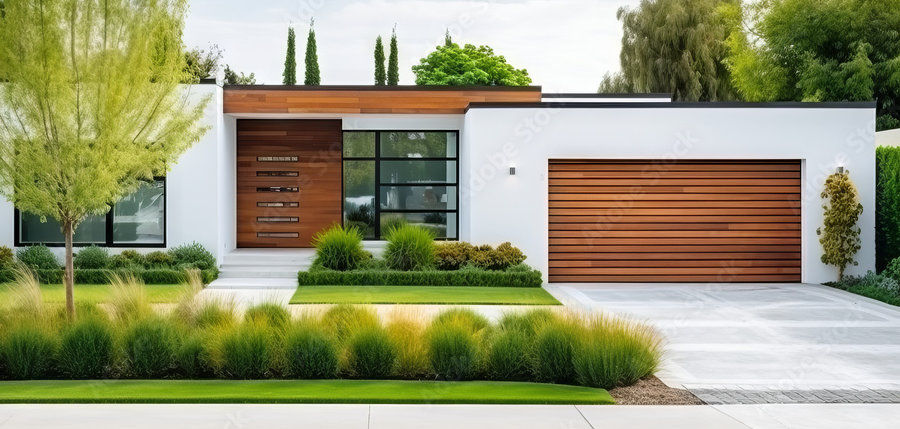Window and Door Installation
- architect's desk
- Nov 1, 2024
- 5 min read
Installing windows and doors is a significant project for homeowners. It can come from renovations, repairs, or new constructions. A proper installation is key for optimal performance, energy efficiency, and safety. This guide offers valuable insights and practical tips to help you achieve a smooth installation and improve your home environment.

Understanding the Importance of Proper Installation
Proper installation of windows and doors affects their functionality and lifespan. For example, according to the Department of Energy, poorly installed windows can result in up to 30% energy loss, which can significantly increase your energy bills. Additionally, leaks can lead to water damage or mold, jeopardizing your home's safety and structure. Therefore, understanding the installation process is essential for homeowners who want better comfort and efficiency.
Energy-efficient windows and doors not only minimize environmental impact but can also save homeowners approximately 15% on heating and cooling costs annually. This makes proper installation not just a quality concern but also a smart financial move.
Door styles- Doors are classified in several ways: When choosing, you must distinguish between exterior and interior doors. Exterior doors are thicker than interior doors and are fabricated with waterproof adhesive. Never specify an interior door for an opening exposed to the weather.

Doors are also classified by appearance, which is related to their manner of construction. Most builders recognize three basic styles: Sash, flush, or louver doors. Sash (also called panel) doors consist of a frame of horizontal rails and vertical stiles. This outer border surrounds one or more insert or raised panels. Wood entry doors and French and patio doors commonly feature this type of construction. Flush doors, an economical option for basement and secondary entries, have a flat face on both sides. Flush doors can have a solid or a hollow core; the latter are acceptable for interior use. Louver doors, commonly used on interior closets and laundry rooms, resemble elongated shutters.
Selecting the Right Materials
Choosing the right materials for your windows and doors is essential for achieving the best results. Factors to consider include climate, your design vision, and budget.
Window Materials
Vinyl: This option is affordable, energy-efficient, and requires minimal maintenance. Vinyl windows, for instance, can save homeowners up to $500 annually in energy costs in certain climates.
Wood: Provides a traditional aesthetic and excellent insulation but requires regular upkeep, including painting and sealing. Wooden windows can last over 30 years with the right maintenance.
Aluminum: Known for durability, aluminum can be sleek and modern but may vary in energy efficiency. Using thermal breaks can improve energy performance by up to 25%.
Choosing the right window material affects not just appearance but also performance and expense over time.
Door Materials
Fiberglass: Extremely durable and energy-efficient, making it ideal for frequently used entry points. Fiberglass doors can withstand extreme temperatures and have a life expectancy of 30 years.
Solid Wood: Offers timeless beauty and good insulation. However, it needs more care and can be vulnerable to elements, which might lead to costs of $200 to $600 for maintenance over a decade.
Steel: Provides a strong and secure option but is susceptible to rust without proper treatment. A high-quality steel door can deter break-ins, improving security by nearly 50%.
Choosing suitable door materials can enhance both safety and aesthetic appeal.

Measuring Accurately
Accurate measurements are vital for successful window and door installation. Many manufacturers provide specific measuring guidelines that must be followed to ensure a proper fit.
Measuring for Windows
Width: Measure the opening from the inside jamb to jamb at the top, middle, and bottom. Use the smallest measurement for accuracy.
Height: Measure from the top of the sill to the underside of the head casing at both sides. Again, take the smallest measurement.
Depth: Confirm the depth of the opening to ensure your window fits correctly.
Measuring for Doors
Width: Measure the door frame from left to right at the top, middle, and bottom for uniform numbers.
Height: Measure from the floor to the top of the door frame at both sides.
Thickness: Standard doors typically measure 1 3/8 inches thick, but confirm within your frame to ensure compatibility.
Taking the time to measure accurately ensures your new windows and doors fit perfectly, saving you time and frustration during installation.

Installation Process
Preparation
Before you start installation, gather the right tools and materials. Essential tools for window and door installation include:
Level
Caulk gun
Tape measure
Hammer and nails
Screwdriver
Utility knife
Safety glasses
Prepare the area by removing any existing windows or doors and ensure the opening is clean and dry.
Installing Windows
Apply Caulk: Start by applying a bead of caulk along the bottom of the window opening to create a weather-tight seal.
Position Window: Place the window into the opening, ensuring it's lined up properly.
Level the Window: Use a level to check that the window is straight. Adjust as needed with shims.
Secure the Window: Once level, secure the window according to the manufacturer's instructions, usually by nailing or screwing it into place.
Seal: After securing, apply caulk around the exterior of the window to close any gaps.

Installing Doors
Check Frame: Confirm that the doorway is square and level before starting installation.
Fit the Door: Position the door in the frame aligning it correctly.
Hinge Installation: Attach the hinges, beginning with the top and bottom before securing the middle.
Check Swing: Verify that the door opens and closes smoothly and fits snugly against the frame.
Seal: Apply caulk around the edges to prevent water from penetrating.
Following these steps will lead to a strong, secure installation that can last for decades.
Post-Installation Check
After the installation, conduct a comprehensive inspection:
Check for Gaps: Ensure there are no visible gaps around the frames that might compromise insulation.
Test Operation: Open and close windows and doors to check if they function smoothly.
Seal Up: Confirm that all seals are intact and there are no drafts coming through.
Following these checks will confirm that the units function as intended.
Maintenance Tips
Proper maintenance is essential for keeping your windows and doors looking great and functioning well. Here are some guidelines:
Regular Cleaning: Clean glass surfaces to prevent dirt accumulation, which maintains a clear view.
Check Seals: Inspect seals periodically to identify wear. Replace any that appear damaged.
Lubricate Moving Parts: Use silicone spray on hinges and locks to ensure smooth operation.
Inspect Frames: Look for signs of damage or wear, especially in wooden frames that could become compromised without proper care.
Steel-clad garage doors are now available with insulating foam cores. They consist of hinged panels that fold as they follow a track into an overhead compartment. Installing these doors correctly depends on proper engineering. The tracking system must be aligned properly and the beam or header that supports the frame above the door must be adequate.

The biggest threat to steel garage doors comes from improper framing. If the beam that spans the door opening is not sufficiently strong, it may sag under the weight of snow or time, compressing the door. The header must carry the weight of the entire gable end of the garage plus any potential snow load. If you live in a severe climate, consider asking a qualified engineer to recommend a header material. Such as structural steel, which has more stability than ordinary farming lumber








































コメント